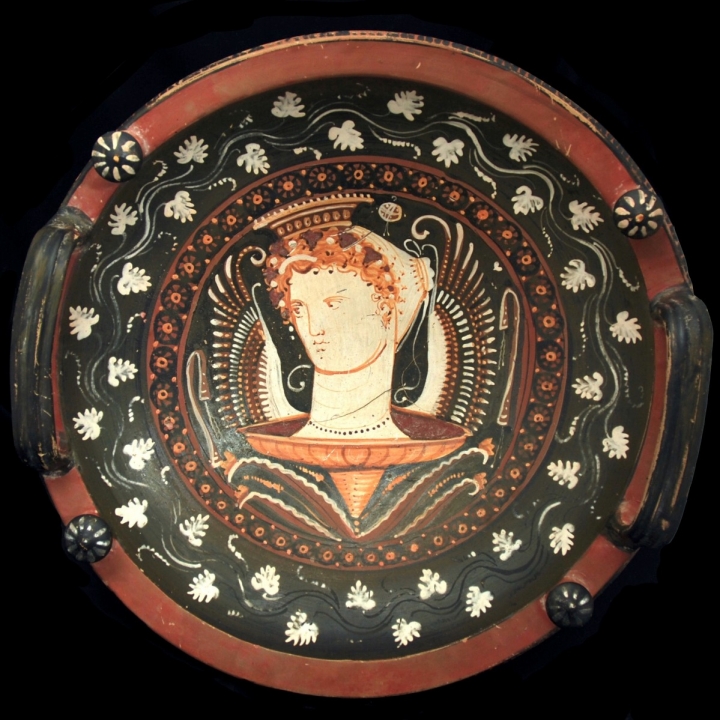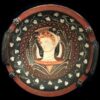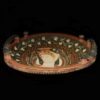Apulian Knob-handled Dish of the White Sakkos Painter
Culture: Greek/Apulian
Period: 320-310 B.C.
Material: Terracotta
Dimensions: 47 cm in diameter
Price: Sold
Ref: 2332
Provenance: Old Belgian private collection. Thence with André Munter Archeologie, Brussels, Belgium. From there acquired on 22 November 2006 by another Belgian private collection. Accompanied by an original certificate from André Munter Archeologie, Brussels, Belgium. On the back of the certificate a sticker with a stamp of a court inspection dated 26 June 2009 with the signature of the law clerk F. Coene N. Accompanied by a TL test.
Condition: Except for some minor stress cracks in the centre and on the foot intact. Large color loss at the once black bottom, which does not affect the quality of the patera.
Description: Large knob-handled dish (patera) of the White Sakkos Painter with a magnificent painted winged head in three-quarter view. The feminine-looking head could personalize the goddess of victory Nike, but also the god of love Eros. The deity wears a white hood on the back of the head, which is typical for the White Sakkos Painter (Sakkoi) and gave him the name. Thick curls adorned with an ivy tendril are framing the finely drawn face. A necklace is set around the neck. The head rises from a shimmering calyx created by applied colors with a tapering foot. On the sides tendrils. To the left and right of the head spread out wings, at the very outer edge ribbons (tainia). Above, behind the head, a phiale, to the right a ball of wool. The central motif is framed by a band of rosettes. In the bulge of the dish magnificently painted wine leaves in added white. The vessel has four knobs (buttons) painted as blossoms and two handles with a middle ridge. On the outer side encircling tongue decoration. The winged deity and its surrounding decoration is painted in red-figured technique and thence elevated in several layers in white and yellow. This gives the motif a special plasticity. The White Sakkos Painter, a student of the Baltimore Painter, is considered as one the grand masters of the late Apulian red-figured vase painting. Accompanied by a thermoluminescence test confirming the age of the dish.





